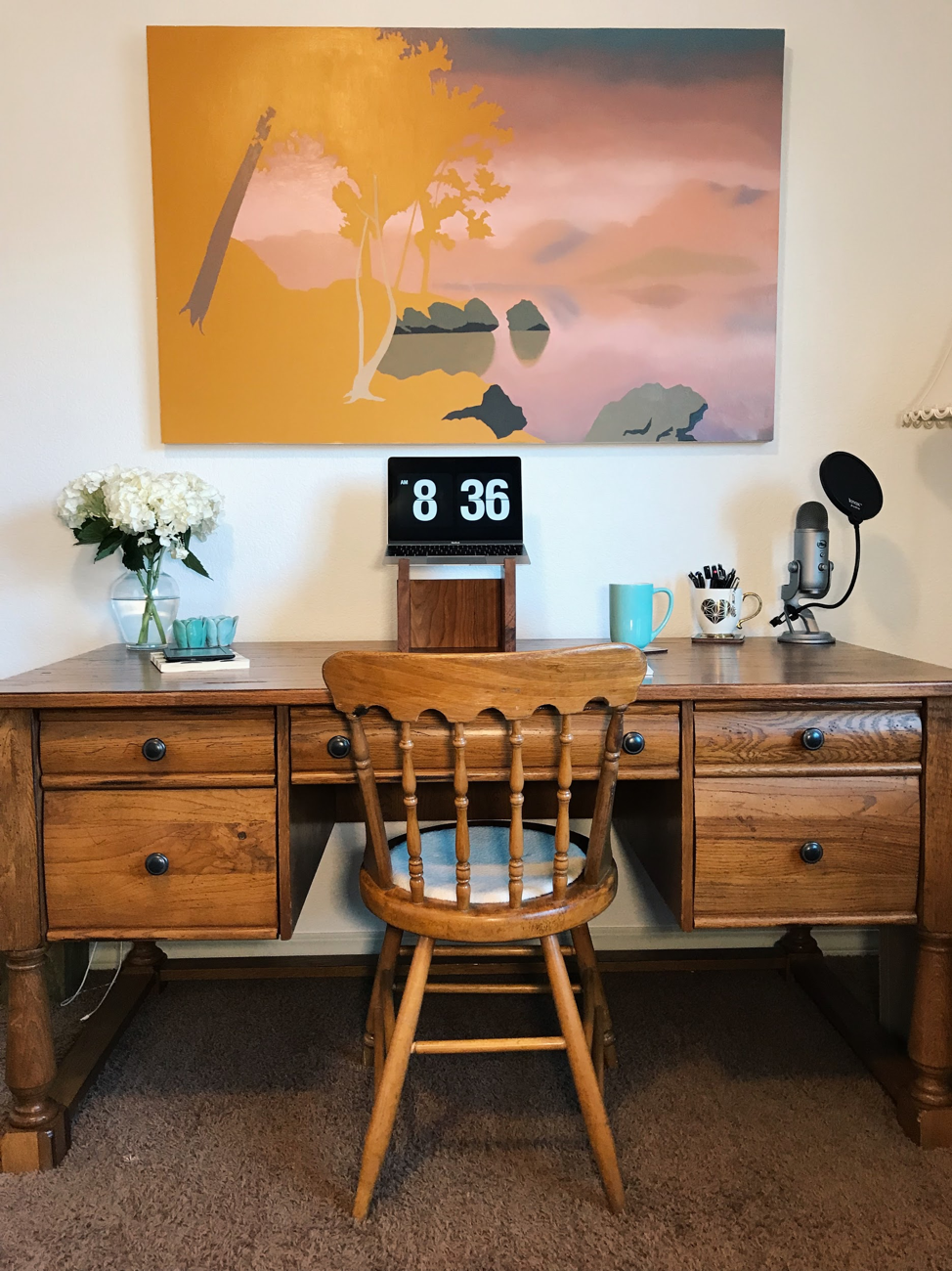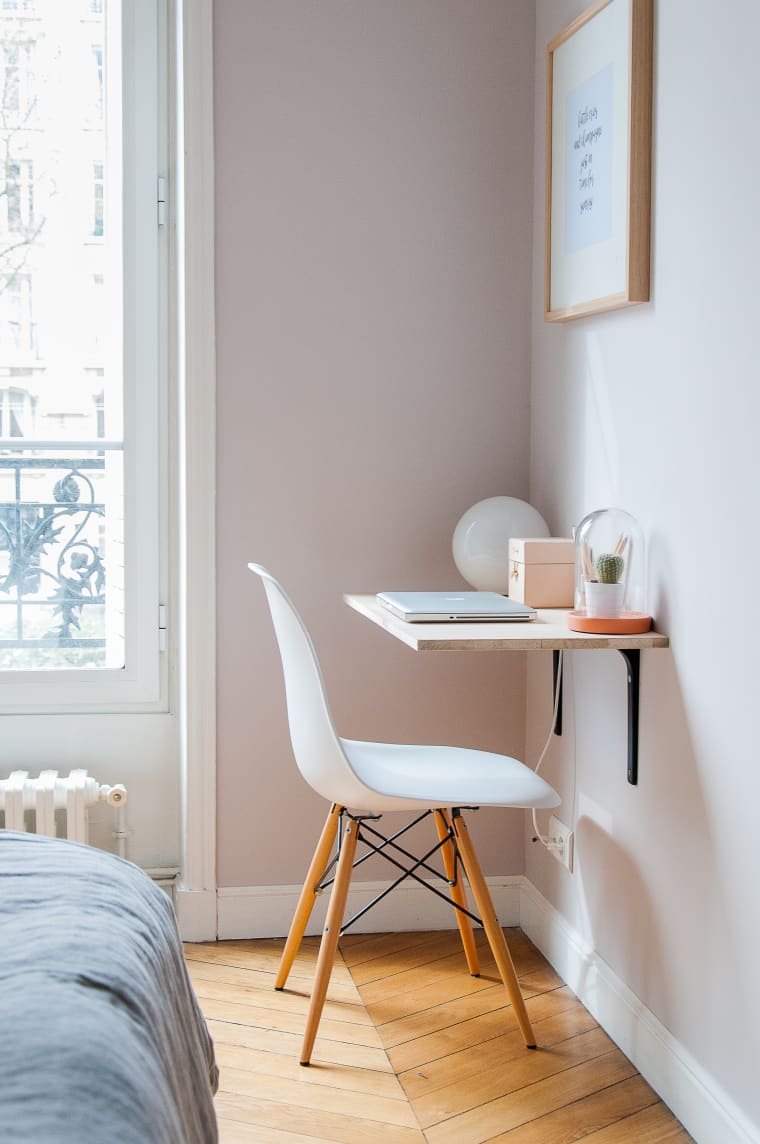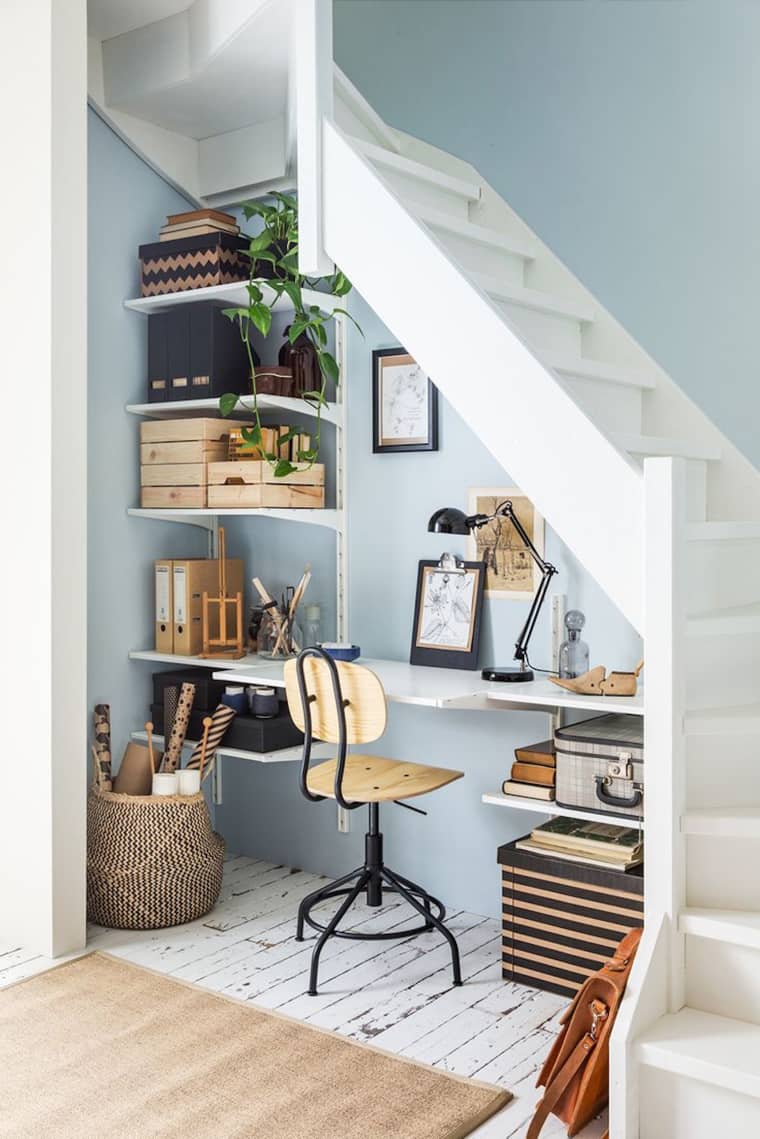Going Remote: How to Create Your Own Flexible Workspace
Working Remotely
Working remotely, but don’t have an office? We’ll share the must-have ingredients for creating a productive, flexible workspace anywhere.

What are the best tips for creating a flexible workspace?
If you’re new to remote work, having a home office is ideal, but not the only way you can establish a productive work environment.
A flexible workspace allows you to find creativity and productivity no matter where you happen to set up shop.
These spaces may change day-to-day or take on a multipurpose use after COVID-19 quarantines lift.
So in this guide, you’ll learn all the must-have components for creating a flexible workspace anywhere in your home, garage, she-shed, houseboat, dining room, or wherever.
Then we’ll also share a few Instagram-worthy examples that will give you major inspirational vibes to run with.
5 Flexible Workspace Must-Haves
Even if you can’t dedicate a specific room as your office, you should still include these five must-have ingredients in your flexible workspace.
Each will make your work-from-home space somewhere you actually want to sit and get down to business.
#1. A Neat and Clutter-Free Base
As you build your work-from-home space, it’s important to keep the clutter out. After all, a cluttered space makes for a cluttered mind.
You’ll never feel motivated to sit down and tackle your workload if you have to clear a mountain of paperwork, mail, dirty dishes, kids’ toys, etc. first.
You’ll either spend way too much time cleaning instead of working, or you’ll be too distracted by it to get anything done.
So when creating your own flexible workspace, think about an area that’s least likely to get messy. If you don’t have one of those, it’s time to create a tidy-up rule.
Whether you have an entire room to work with or a small space, you’ll need to commit to keeping it free of clutter and junk. Only add essential items that will promote a productive workplace.
One of those essentials includes:
#2. A Desk that’s the Right Height
If you’ve been working on your coffee table or dining room, you’ll definitely want an upgrade.
And since you’re working from home and creating your own work sanctuary, it pays to get a desk or table that’s the right height for you.
If your desk is too high, your shoulders will remain elevated during the day, which could lead to tension, pain, and neck issues.
On the other hand, working at a desk that’s too low will force you to stretch your neck down too far, causing unnecessary and potentially painful strains.
To avoid this, find a desk (or build one!) that helps you sit at the optimal height for your body.
Ideally, and ergonomically speaking, you want your shoulders to be right in line with how you normally stand. This means they shouldn’t be raised or pulled down.
So consider buying an adjustable desk that you can tailor to your needs.
What you sit on should also be considered with this same regard. Image via Ethan Urie (Senior Backend Engineer, GitLab)
Image via Ethan Urie (Senior Backend Engineer, GitLab)
 Image via Ethan Urie (Senior Backend Engineer, GitLab)
Image via Ethan Urie (Senior Backend Engineer, GitLab)#3. An Ergonomic Chair Offering Plenty of Support
Choosing a better chair instantly transforms any space into a productive, flexible workspace.
Because while working from the couch may be fine in the moment, it can make you slouch and feel uncomfortable after a while.
Plush leather chairs are no different; besides the potential for sinking in, they can also lose their support over your workday.
So for this vital piece of office equipment, it’s a good idea to find an ergonomic chair specifically designed to provide support in all the right places.
A sturdy mesh office chair can combat the feeling of sinking, and it’s more breathable so you won’t get hot while you work.
Finding the right chair -- at the right height -- can allow you to work comfortably for hours, which will make working from home a breeze.
#4. High-Quality Office Equipment
If you haven’t invested in high-quality office equipment, you may find that working from home is frustrating and demotivating, or worse, gives you headaches.
But outfitting your flexible workspace with the best equipment you can afford will help you get more done in less time.
Research the best options in your budget for these must-have items:
- High-speed router for super fast WiFi
- An upgraded computer/tablet
- Ergonomic keyboard
- Speakers or a headset
- Microphone
- Desk lighting

Each of these will make your workday go by quickly and painlessly. They’ll also make a huge difference in the quality of your video conferencing.
Don’t be afraid to splurge a little now and then. Remember, as long as it helps you work more efficiently and be more productive, the investment is totally worth it.
We’d also recommend leaving some room in your budget for office extras like a yoga mat, meditation cushion, plants, and pictures to help jazz up your space.
The first two items are perfect for helping you combat the vice of sitting all day and give you a nice mental boost. The last few will help your space feel more welcoming, stimulating, and visually-appealing.
#5. Bonus Points: Snag a Good View
Positioning your office setup near a window is something worth considering since you’ll be able to let natural light in your workspace.
Windows are also helpful for taking eye breaks every so often. You’ll be able to look away from your work and off into the distance to prevent eye strain from blue light-emitting screens and devices.
As you may have already experienced, windows are also great for not having to stare at a wall all day.
So while you’re setting up your flexible workspace, try to position it around a window. Either face your desk in the window head-on, or sit next to one so you can turn and check out the view.
Now let’s see how other remote workers put all these pieces together.
5 Work from Home Design Ideas for Inspiration
If you’re looking for flexible workspace inspiration, you can steal a few ideas from these expert-level home offices:
#1. Minimalist Zen
#1. Minimalist Zen

My Workplace at home by Hoang Nguyen via Dribbble
This minimalist office perfectly embodies having the essentials plus a few helpful extras, such as the small plants and relaxing (not distracting!) artwork.
This minimalist office perfectly embodies having the essentials plus a few helpful extras, such as the small plants and relaxing (not distracting!) artwork.
Don’t have the space to create an elaborate setup? Who needs it when you have the best view in the house?
Just grab your laptop, sit in a supportive chair, and take advantage of working from home before you have to go back to your boring office.
#3. Modern, Chic Flexible Workspace
 Image via InVision
Image via InVisionIf your style is more modern and chic, take your cue from this example combining simple elegance with clutter-free cleanliness.
#4. Artsy With Pops of Color and Plants
 Image via Buffer
Image via BufferYou can also have some fun with your workspace by weaving in plenty of pops of color to keep your senses engaged and interested.
Then add a few plants to bring nature indoors when you’re stuck inside.

Image via Justine Shu, Marketing & Community Manager at We Work Remotely
These bright, flexible workspaces both conjure up happy thoughts to help you create something amazing.
#5. Don’t Underestimate Small Spaces
 Image via Apartment Therapy
Image via Apartment TherapyYou don’t need a huge space to make your flexible workspace productive.
As this example shows, you can squeeze in an office space anywhere, even if you only have a corner of your bedroom to do so.


The example below proves it’s even possible to create a workspace under your staircase:

Image via Apartment Therapy
Or try transforming unused space in your house for the perfect flexible workspace like this example does:
If someone can make a workspace in an unused closet, you can create one anywhere too.
Or try transforming unused space in your house for the perfect flexible workspace like this example does:
If someone can make a workspace in an unused closet, you can create one anywhere too.
Final Thoughts on Carving Out a Flexible Workspace at Home
Don’t worry if you can’t build an Instagram-worthy space like these examples right away.
As long as you have the essentials -- a good computer with high-speed internet, a supportive chair, and a desk you can work at -- you can create a flexible workspace to suit your needs over time.
If you’re lucky to have the extra space and you plan to work from home for the long-haul, it pays to invest in creating an environment that you’d be happy to work from for hours.
Doing this will boost your productivity and your morale, and you may find it much easier to show up to work every day.
← Back to Blog
 Image
Image